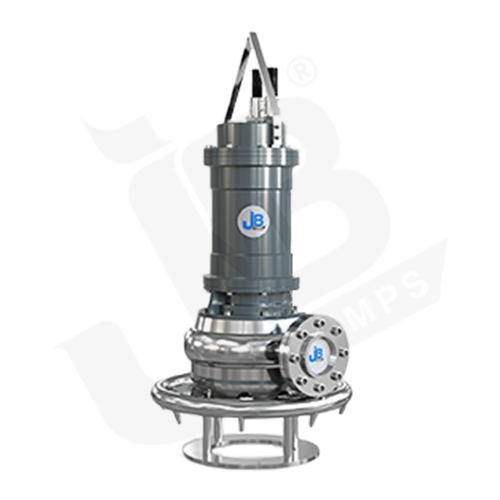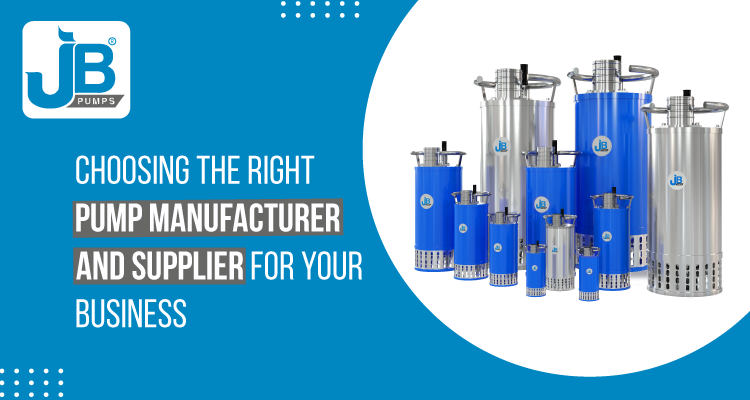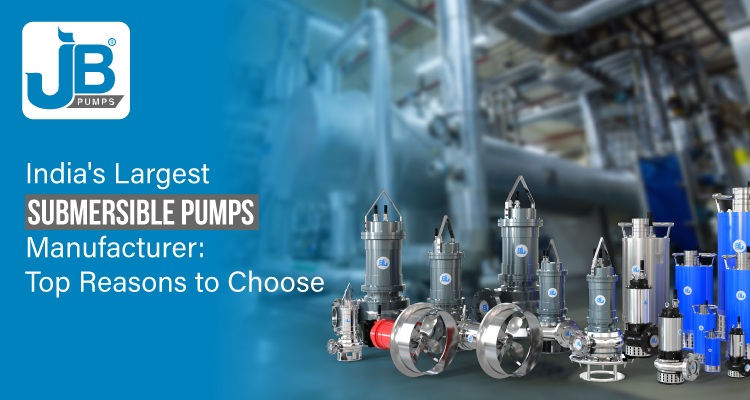
A slurry pump is a type of centrifugal pump designed to move suspended solids, such as particles of sand gravel, through a liquid medium. Slurry pumps can be used for applications where solids are present in the fluid stream. It is an application based pump and the material selections are made for trouble free performances.
The design of the slurry pump allows it to increase pressure so that the slurry can be moved to large distances or up vertical inclines.
Slurry pumps are used to handle highly abrasive and corrosive liquids in dredging, mining, and mineral processing applications. Commonly, they are used in wastewater treatment operations.
The pumps are known for their weight - fair structure, reliability, efficient operational functions and easy-to-install and maintain activities.
During running the slurry pumps, some common issues are caught by the owners such as low or instability in the flow, leakage, unnecessary noise and vibration, overheating, etc.
In this blog, you will learn about the common issues faced while operating the slurry pumps and their solutions.
Common Issues of Submersible Slurry Pumps and How to Address Them
Slurry pumps face several challenges in its operational activities as well as service applications. Problems like leakage, overheating, and system inefficiency are some of the common problems that you may face.
Some pumping issues are often more complex and expensive than you think - over 80% of overall pumping issues are related to the system rather than the pump itself.
Some of those are:

Overheating
One of the most common problems with slurry pumps is that it starts catching heat over its operational time. It can be caused by several factors that we will look into after. A pump may seize up or fail due to overheating which can lead to costly repairs or replacement in future.
The heating up can be occurred due to following causes:
- Inadequate installation
- Lack of maintenance
- Wrong lubricants
- Impurities in oil
- Wrong direction of bearing
- Air in the system
As a result, multiple things go wrong in the operation. Different pumps with different applications can have different implications on the systems such as malfunction of pump, life of the pump, extra noise, safety hazards, and above all it wastes energy and increases operating costs.
Now, to address this problem, one needs to ensure that the regular maintenance of the pump is taken care of. Checking the thermostat, cooling system, blockages, oil level, air intake, cleaning its filter and impeller or inspecting the electrical system are the steps to consider for its maintenance.
Apart from that, adjusting the amount of lubricant or the thrust bearing direction according to the instructions can be a solution to the overheating.
Leakage
Another problem that slurry pumps can experience is the leakage in its packing place. Symptoms of leakage can be identified by the reduced capacity of driving impeller, water flow, visible water spots, or unusual noise.
To fix it, it is necessary to repair the faulty parts rather than waiting for the failed performance of the slurry pump.
Leakage often occur because of;
- Differentiation of the shaft and stuffing box
- Incorrect installation
- Blockage in sealing water pipe
- Lack of monitoring
- Insufficient lubrication
Generally, the breakdown in mechanical seals causes leakage in slurry pumps, which challenges its overall operation system.
Ensuring zero errors in installation, replacing a new water sealing ring, dredging the blocked pipes, and keeping the water clean are the proven solutions to the problem of leakage in slurry pumps.
Excessive Noise and Vibration in Pump
The noise generated to the general level by the pump and systems is quite normal, but when the pump starts to make excessive noise from it and gets to vibrate even more, it is a matter of concern.
Below mentioned are some of the causes why slurry pumps accidentally starts to make extra noise:
- Uneven density of media
- Incorrect position of pump
- Unbalanced impeller
- Uneven intake of suction pipe
- Old or unmaintained pump
- Uneven intake of suction pipe
All these causes result in the unbearable noise in the pump and even starts to get more vibrative, which could be a serious concern in future and can not be ignored.
As a solution, one needs to just pay attention to blow the medium evenly with high pressure wind before starting. The position of the pump should be maintained in a horizontal manner. Lowering the installation height and improving feed condition of the pump could also work as the solution to it.
Over Power Consumption
Stating the concern of the environment and increasing need of power electricity, it is important for the industry to try saving power from excessive power consumption of slurry pumps. Slurry pumps, with time, start to consume more power than before.
If compared, slurry pumps normally require 39.8 bhp(assuming 60 percent hydraulic efficiency), but it also varies between the two technologies with the centrifugal pump requiring up to 30 percent more power to operate.
In case when you see the pump consuming more power than the normal requirements, there are potential reasons which could be the causes of it.
Such as:
- Incorrect size of pump
- Improper adjustment of packing gland
- Wrong viscosity
- Rotation in wrong direction
Above causes can lead the pumps to use extra energy than usual, which can increase the electricity costs and reduce the efficiency of slurry pumps.
In order to save your cost head and pump’s efficiency, try finding ways to minimize the energy consumption. One of the main solutions is to choose the correct size of pump and avoid oversizing the pump. Other ways to improve efficiency and reduce the energy consumption are to shave the impeller, vary the rotational speed of the motor, use multiple pumps, optimize the system pipework limit, and eliminate the unnecessary use of slurry pumps.
Insufficient Flow
Low flow rate of the slurry pump can be one of the most disturbing problems above all. There are severe causes of it. The unstable flow of the pump can effectively impact its overall performance.
The potential causes of the low or insufficient flow of the pumps are:
- Blockage in impeller and outlet pipeline
- Worn impeller
- Reduced pipe diameter
- Obstructions in line
- Problem in motor
To account for the unstable flow of the pumps, try cleaning impeller and pipeline to avoid obstructions, clean the blockage in the water inlet, adjust power supply, and check or replace the severely worn ring from time to time.
When the depth of the bottom valve is insufficient, it allows air to enter while pumping which again can result in the low flow of the pump; to overcome this you can adjust the depth of bottom valve according to the suction stroke of the slurry pump.
Cavitation in Pump
Cavitation is the formation and accretion of bubbles around a pump impeller. Cavitation often occurs when the liquid converts itself into a vapor at low pressure. Usually, cavitation’s occurrence happens when the pressure is not enough at the suction and at the end of the pump.
When cavitation takes place, air bubbles are created which creates a shockwave that hits the impeller and creates pump vibration and mechanical damage, possibly leading to complete failure of the pump at some stage.
Causes of cavitation in pumps include:
- Clogged filters
- Poor piping design
- Restricted discharge flow
- Unfulfillment of NPSH requirements
- Leakage in o-ring, seals, or pipe
The unusual noise and vibration are the signs to identify the cavitation in pumps which occurs because of the bursting of the vapor bubbles.
To prevent cavitation, incorporate a booster pump in your pumping system and if possible reduce the temperature of pump, liquid, or other components. Reducing motor speed and increasing liquid level around the suction area can also help to avoid cavitation.
Now, when you encounter that the pump isn’t working well or efficiently, it can be because of common causes that generally leads to the above problems in the pump.
The most common causes for above all the problems are:
- Incorrect pump
- Poor operating condition
- Inappropriate installation
- Lack of regular maintenance
- Wear
- Improper observation
How to fix it?
These unwanted consequences arise due to the owners lacking in maintenance and observation and their least attention to the details of the pump. Fortunately, to resolve these problems, there are ways to fix them on their own by inspecting pumps on a regular basis.
- Check oil level and viscosity
- Replace worn parts on time
- Ensure that the chosen pump operates at its best efficiency
- Timely and proper maintenance
Although these issues may harm the operating system of pumps, the fixing ways shown above can be proven best as the pre-safety steps.
Make a Right Choice!
The only common mistake any owner can happen to make is choosing the wrong pump for their applications. The right decision made while selecting a pump of the right size and motor can save the future repairing and maintaining cost of it. Our manufacturers know how to make the best slurry pumps for your suitable applications with great efficiency and operation system. Don’t forget to consider JB Pumps while going for the one - make the right choice!



